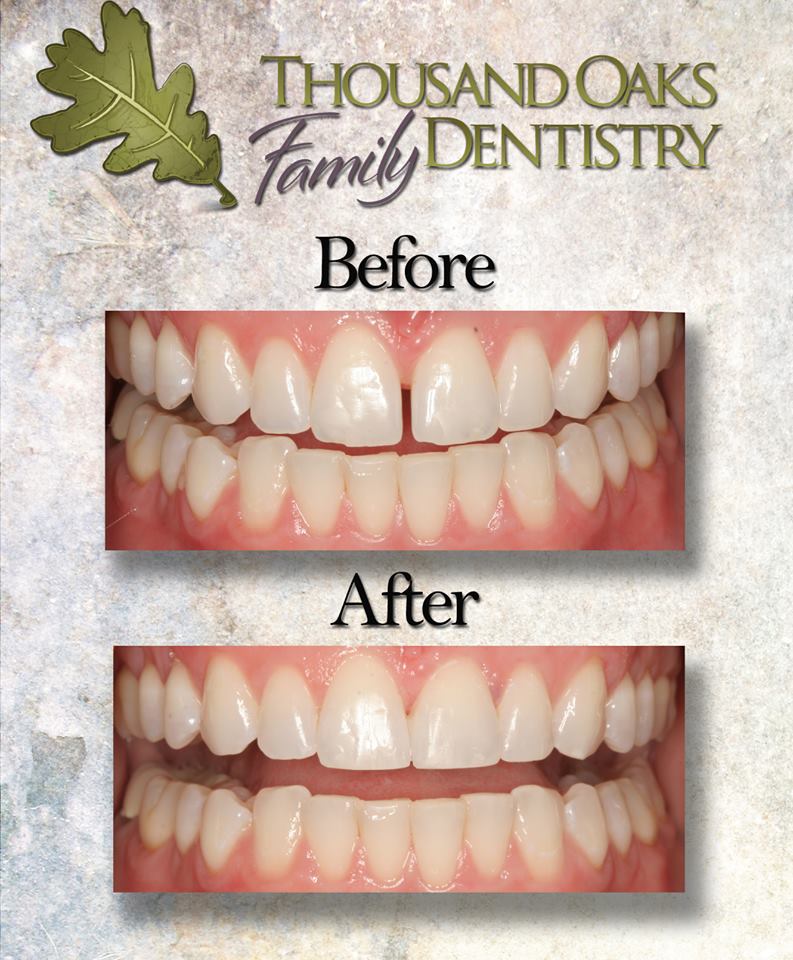Often times, patients will be very satisfied with their oral esthetics aside from one feature. Thier teeth can be straight, white and well spaced, saving for a single tooth. In these cases, orthodontics may be impossible or unnecessary for purely esthetic results. Here, cosmetic bonding proves to be the most predictable and reliable treatment to a perfect smile.
In this case, bonding was added to compensate for a short lateral incisor (left of center).
Cosmetic bonding is one of the most underappreciated cosmetic procedures offered in dental offices. Using the same tooth colored material as fillings, we rebuild and recontour teeth to better fit and fill out your smile. This material is extremely durable, and can be used to lengthen, widen or "even out" the appearance of your front teeth. Our patients are always satisfied with the results, as the transition from natural tooth to filling material is virtually undetectable.
Here, bonding was used to close the gap between the patient's two front teeth.
Your appointment will begin with a short consultation on esthetics and a few photographs. We strive to match your expectations and desires before we start working in your mouth. Once a decision has been made on how and where to add bonding, we use high pressure air abrasion to temporarily roughen the tooth surface. This step is comparable to rubbing wood with coarse sandpaper before painting. After the tooth surface is prepared to accept composite, we add our bonding agents to the indicated area, followed by the tooth colored composite. Our composites come in a variety of shades and color, and can match practically any tooth shade. The material is added slowly, contoured to your tooth, and set solid via a high intensity curing light.
After we select an appropriate tooth color and light cure it, we begin shaping the material to resemble a completely natural tooth. The refinement process utilizes sanding discs, polishing points and a number of sensitive techniques. The results look and feel completely natural in your mouth.
However, there are limitations to cosmetic bonding. It can generally compensate for deficiencies in tooth structure, but cannot address size issues such as overcrowding. Additionally, once structure has to be built out over 3-4mm, bonding becomes a less reliable long term cosmetic solution. For these in-depth cases, we typically recommend more involved esthetic procedures. Finally, bonding can interfere with teeth whitening or whitening results. Since bonding material does not respond to hydrogen peroxide, it does not change shade proportional to your natural teeth. Hence, we recommend you complete a bleach treatment prior to performing esthetic bonding.
Many consider veneers, orthodontics and whitening as the standard of dental esthetics. However, we urge you to consider bonding to address your mild to moderate cosmetic dental concerns. The minimally invasive nature of these procedures makes them convenient and accessible to many patients. Feel free to call our office with any questions or concerns you have about the process, materials or results behind cosmetic bonding.



